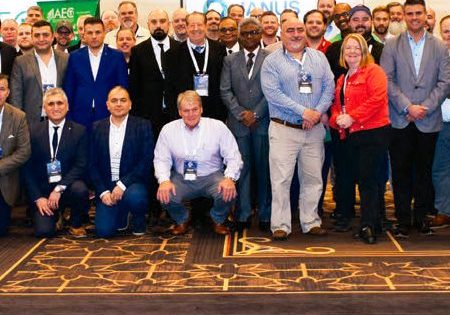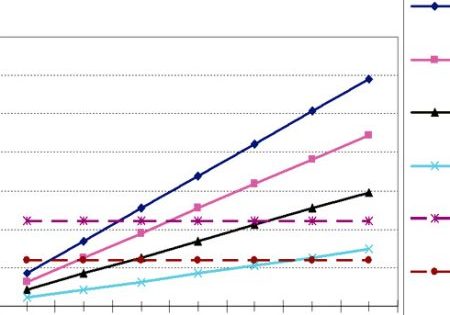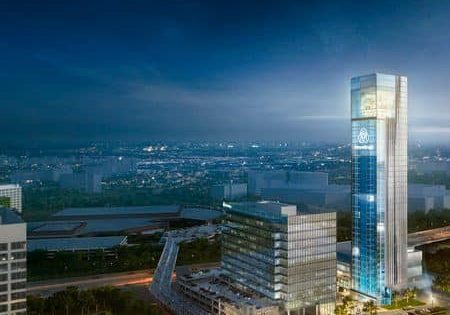Trending Upward
Feb 1, 2020

thyssenkrupp looks at technology and innovations for 2020 and beyond.
submitted by thyssenkrupp Elevator
As the world enters the third decade of the 21st century, we see that technology and innovation are increasingly the driving forces behind modern-day trends, and thyssenkrupp Elevator is bringing 2020 (and beyond) into clearer focus by highlighting some of its plans and predictions. Among them:
- Increased development of skybridges
- MULTI to be featured at Expo 2020 in Dubai
- Test-tower progress
- Artificial intelligence (AI) and smart technology
- Robots
- Smart energy
- City walks
Skybridges
Skybridges were invented as a way of getting from one building to another at height, but architects have begun to show us that these connecting passageways can be more than a way to get from Point A to Point B — they can be destinations in and of themselves. The skybridge as useful living space appears poised to be a growing trend in 2020. Markus Jetter, head of thyssenkrupp’s Research & Innovation Center in Rottweil, Germany, said, “Rather than holding the function of a pedestrian bridge between skyscrapers, these areas will instead be turned into living spaces at exciting heights. [They] will include swimming pools, event spaces, meeting rooms or even a skybar.”
Of course, they won’t relinquish their primary role as pathways for people on the move. “Skybridges are the transportation routes of the future, instead of a mere architectural connection,” Jetter said. “As a cross-connection with many functions, they also pave the way for our horizontally moving, ropeless system, MULTI.”
thyssenkrupp Elevator is funding an 18-month research project, “Skybridges: Bringing the Horizontal into the Vertical Realm,” which will culminate in the publication of a Council on Tall Buildings and Urban Habitat technical guide on the topic, with detailed narratives and technical drawings, as well as historical overviews and future speculations about skybridges’ potential.
Buildings of the future will increasingly become so-called “vertical cities.” Within these, the vertical and horizontal MULTI can connect floors and buildings with each other. Vertical cities are not expected to replace road traffic, but the horizontally and vertically moving MULTI elevator system can serve as a passenger transport system in buildings that will be more strongly connected to each other in the future, and through skybridges, MULTI and moving walks, like thyssenkrupp’s ACCEL, can be installed, establishing an alternative route between buildings. In terms of safety, this would serve as an important way to separate traffic streams between people and automobile transportation. In terms of horizontal transportation, ACCEL is seen as a link between moving walks, which cover distances up to 100 m, and automated people movers, which can cover distances of 800 m-plus. ACCEL transports up to 7,200 people per hour per direction at speeds up to 2 m/s.
MULTI at Expo 2020 in Dubai
Speaking of MULTI, the new technology will be presented as an important innovation at the German pavilion at Expo 2020 in Dubai, which starts in October. MULTI, the world’s first ropeless elevator system specifically made for skyscrapers, will dominate the future development of urban mobility as it expands on passenger movement potential. MULTI is driven by linear motors and cabins that move independently, with multiple, ropeless cars operating within the same shaft. Multiple shafts can be built into loop configurations, which allows for fewer shafts transporting more people with greater efficiency. thyssenkrupp says MULTI can cut a building’s elevator footprint by 50% while offering 50% greater transport capacity and reduced waiting times for passengers. The company further says MULTI opens new perspectives for architects and developers.
A thyssenkrupp spokesperson said the Expo 2020 event is important for MULTI because the Middle East, with its boom in cutting-edge high-rise construction, makes it a natural draw for vertical-transportation innovation. MULTI is currently in its industrialization phase, and is expected to win certification in 2023, the spokesperson said.
Test Towers
Vertical construction on the tallest elevator test tower in the Western Hemisphere will continue this year in Atlanta, with the skeleton or core set to reach its full height of 420 ft in the spring and full completion on schedule for summer 2021. The tower will be part of thyssenkrupp Elevator’s Innovation and Qualification Center, which will be the crown jewel of the company’s new North American headquarters at The Battery Atlanta.
On September 20, tower running enthusiasts from around the world will once again compete in thyssenkrupp’s Tower Run at the company’s test tower in Rottweil, Germany. This ultimate test of endurance and fitness will see the participants challenge the tower’s 1,390 steps and 761 ft in height. In 2019, 1,000 runners from 18 countries competed. Among the classifications for this year’s event will be races for police officers and firefighters in full equipment.
AI and Smart Technology
Moving forward in 2020 and beyond, intelligent algorithms based on artificial intelligence have the potential to disrupt the VT industry by improving the flow of passengers. With older technology, taking an elevator often requires a long wait for the cabin to arrive. New technology can control traffic flows more intelligently across a building, cutting down on the wait, but even better, these systems have an embedded “learning process” that analyzes every action and tells the system how things can be improved, ensuring absolute minimal waiting times for passengers.
While waiting for a working elevator can seem time- consuming enough, waiting for an out-of-service elevator to be repaired can seem endless. Even the most advanced technical systems require maintenance, and it is far better to do this proactively, rather than after a breakdown has occurred.
Predictive maintenance courtesy of thyssenkrupp Elevator’s MAX system reduces downtime to a minimum while optimizing spare parts logistics. MAX uses artificial intelligence, and the technology will get even smarter in 2020 by employing “human” methods of learning, in which it carefully examines incidents that occur, then draws conclusions on how to best address problems. The use of algorithms allows more-intelligent control of elevators.
Robots
Collaborative robots for installation and service will take over complex and risky tasks, such as the measurement of a shaft, which will relieve the workload of fitters and technicians considerably, but thyssenkrupp has already demonstrated the growing potential of these helpful machines. For example, in 2019, thyssenkrupp Elevator presented a new robot interface that enables automated delivery service inside buildings. This means that a robot can now communicate with the elevator and move freely like a human passenger. The robot determines the destination floor and the elevator starts moving. With the help of image processing technology, the elevator can detect whether there are already too many people in the cabin and if it must wait for the robot or send another one without the need for an additional call. The technology has an ever-growing list of potential applications, such as delivering room service in hotels or transporting urgently needed lab samples in hospitals. But what else?
“The new thyssenkrupp Elevator interface not only benefits hotels and hospitals, but a fashion manufacturer is also testing robots and interfaces for transporting goods from the warehouse to the storerooms,” said Javier Sesma, managing director of the thyssenkrupp Elevator Innovation Center in Gijón, Spain. But don’t think that the elevator industry can’t benefit from automated delivery systems. In fact, thyssenkrupp is testing its own autonomous vehicles to take spare parts to technicians onsite.
Regarding the delivery of spare parts, intelligent systems have taken a big step. For example, big data analysis identifies components that will be needed by technicians on particular routes throughout the day and even throughout the week. This means they will literally have everything on board on Monday for what will be needed on Friday. Defective parts can be removed just in time without any order or waiting times. This year, thyssenkrupp Elevator will introduce a concept for a corresponding spare parts warehouse.
Smart Energy
Smart energy management is not an option in the 21st century — it’s a must. Sophisticated elevator solutions offer significant contributions in the area of energy management. For example, energy management systems can ensure that elevator brake energy will not have to be fed back into the grid, but instead can be used for further powering of the elevator itself. The operators of buildings will realize cost savings because they can better control peak power, thanks to smart energy management by thyssenkrupp Elevator.
CityWalks
In today’s dense urban areas, people seem to be moving faster every day, and the need to go from place to place is not going to change. One solution is the installation of city walks, and thyssenkrupp’s iwalks offer an excellent choice for the need to move people quickly throughout a city. These moving walks do not require a pit and can therefore be installed almost anywhere: temporarily or permanently, horizontally or inclined, in existing underground metro stations, along a historic street or on a skybridge connecting buildings.
iwalks “are like a flying carpet, so to speak, that moves passengers forward in an almost magical way,” Sesma said. “The good thing about it is that no digging work is required for installation. Whether flat or with a gradient, roofed or open, [iwalks] are the ideal solution for equipping cities with continuous and sustainable pedestrian transport systems.”
There are many uncertainties about the new decade, but it is starting with an exciting and versatile year for thyssenkrupp Elevator and the future of urban mobility. thyssenkrupp will keep as a major focus its efforts to drive innovation and improve existing solutions, to help ensure the safest, most comfortable and most efficient experience for passengers moving forward.
Get more of Elevator World. Sign up for our free e-newsletter.









